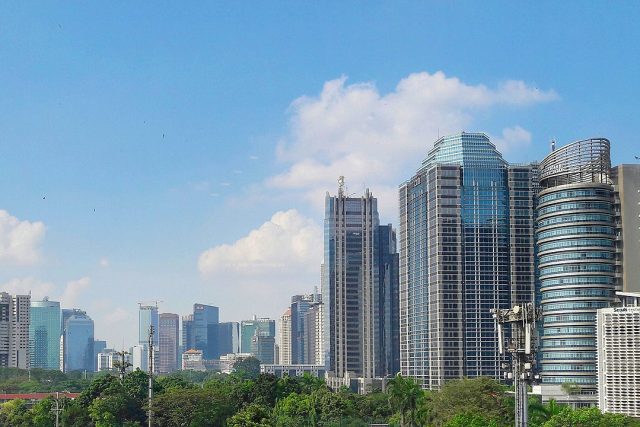Learning from Jakarta
Urban planners extol the virtues of the excellent public transport of places like Hong Kong, Seoul, Tokyo, and London. Filipinos traveling to these places often marvel at how easy it is to get around using public transport, and wish we could have that here, too.
That wish can seem remote. After all, these places are much richer than the Philippines, and good public transport costs money. But that doesn’t mean we can’t aspire to and demand better public transport than what we have today. And we can learn valuable lessons from the experiences of other places which face the same challenges as we do, and are just as resource challenged (i.e. poor) as we are, yet are delivering better public transport to their citizens than we are.
On Nov. 18, the Institute for Transportation and Development Policy — an international organization which advocates and advises cities on sustainable development, including sustainable and inclusive public transport — organized a webinar entitled “The Power, Potential, and Pitfalls of Integration: Lessons Learned from Jakarta’s Public Transport Integration.” A video of the webinar, which lasts just under an hour, is available on YouTube and deserves the attention of everyone interested in public transport in Metro Manila.
Indonesia and the Philippines have similar incomes per capita, and Jakarta and Metro Manila have similar land areas, population, and population density. Jakarta is about the same size as Metro Manila, in terms of land area and population. But, as the webinar made clear, Jakarta organizes its public transport very differently from how we do, and if the videos shown during the webinar are representative, Jakarta’s commuters are much better off than Metro Manila’s.
It is beyond the scope of this article to compare in depth, but even a few highlights show some very big contrasts:
1. Jakarta’s 11 million people, living in 660 square kilometers, are governed as a single political unit, which they call a province, with one elected leader called a governor. In Metro Manila, a slightly larger population lives in a similar land area, but is governed under 17 political units with 17 mayors. Plans, decisions, and project implementation, which in Metro Manila would need the approval and coordination of several mayors, can be approved and implemented by a single unit in Jakarta.
2. In Jakarta, transportation policy, its implementation, and its financing, are responsibilities of the Jakarta local government. Jakarta’s local government plans, implements, and owns the Jakarta equivalents of the LRTs and MRT. It also owns and operates Jakarta’s Bus Rapid Transit System (more on this later). Metro Manila has no BRT, but the rest of the transport-related functions undertaken by the Jakarta government in Jakarta are undertaken by the national government here.
3. Jakarta’s Bus Rapid Transit (BRT) system, one of the world’s largest, is also owned and operated by the local government. That BRT system has 388 kilometers of dedicated lanes with 260 stations and served 950,000 passengers per day before the pandemic.
4. Microbuses, the Jakarta equivalent of our jeepneys, link residential and industrial areas to the larger capacity rail and bus lines, providing much of the first- and last-mile travel in Jakarta. Microbus rides are free for passengers, and their operators are paid distance-based payments through service contracts. Unlike in the Philippines, where the government considers service contracting and libreng sakay temporary responses to the pandemic, these are permanent features of Jakarta public transport.
5. The Jakarta local government subsidizes public transport, at a cost of the equivalent of P12.5 billion per year. This is about 5-10% of the local government’s total budget per year, and during the pandemic, with a collapsed ridership, the subsidies covered about 70% of the system operating costs.
6. In Jakarta, preparations are underway for full fare integration by 2022, under which passengers will be able to pay a single fare equivalent to P18 to travel for three hours, regardless of how many transfers through different transport modes (LRT, MRT, bus, microbus) the trip takes. There are no such plans in Metro Manila, not even for the rail lines.
There are many other differences, and the policies described above are part of a wider package of reforms in Jakarta, including the development of more multimodal stations as well as greater provisions for the needs of cyclists, active transport users, and pedestrians.
Jakarta appears to be willing to spend much more money and play a more active role in ensuring good public transport for its residents than our national government, not to mention our local governments.
Of course, the speakers in the webinar were government officials, who naturally want to show their city in the most positive light. They claim significant improvements in ridership, service quality, and passenger satisfaction, but all governments do that. Listening to them made me want to believe them and wish that our government was doing the same things here.
When it becomes easier to travel, I plan to travel to Jakarta to see whether things are as good as the Jakarta officials described. Because if they are, it will point to policy directions we may want to take here in the Philippines.
Sunny Sevilla is a former government official who believes that it shouldn’t take longer than 45 minutes door-to-door to travel from any point in BGC to any point in Mandaluyong, on public transportation, on Friday at 6 p.m., and that it is government’s job to make that happen.













 Embiid’s 26 points were boosted by 11-for-11 accuracy at the free throw line, where the 76ers outscored the Warriors 23-13.
Embiid’s 26 points were boosted by 11-for-11 accuracy at the free throw line, where the 76ers outscored the Warriors 23-13.